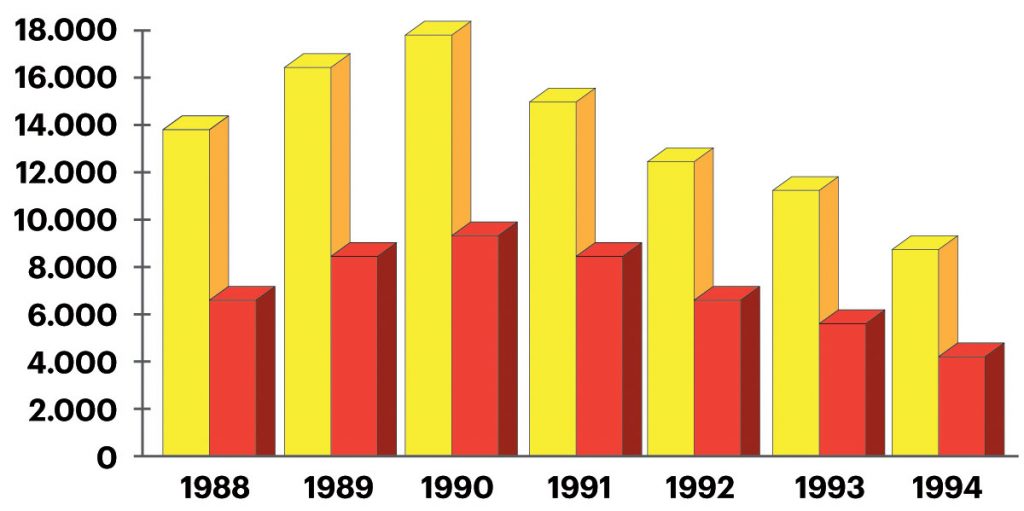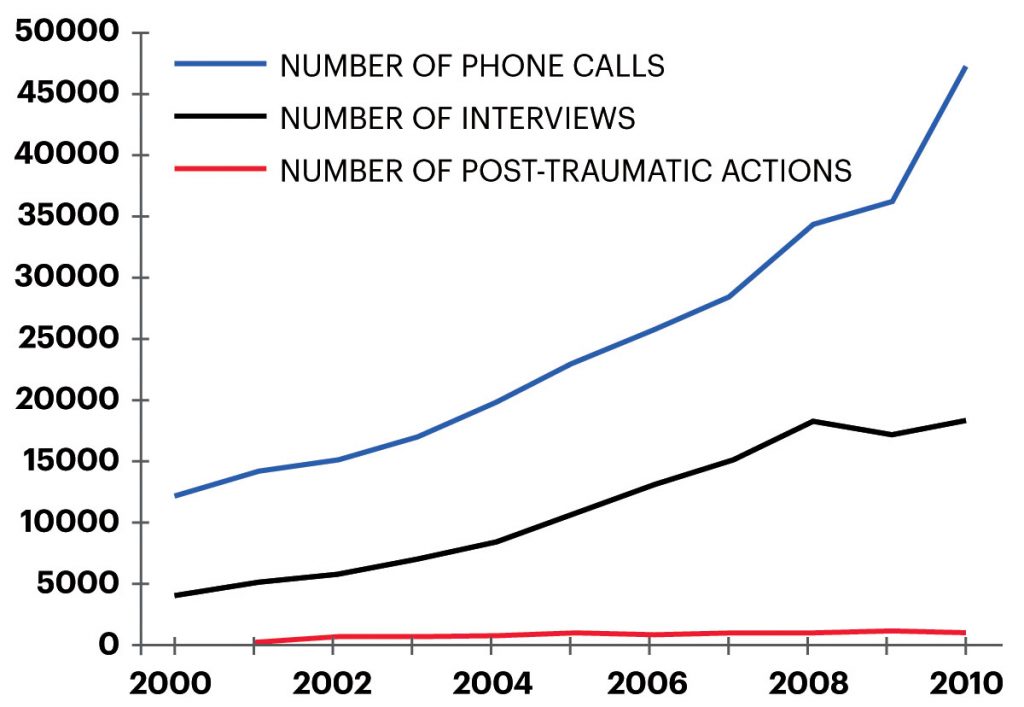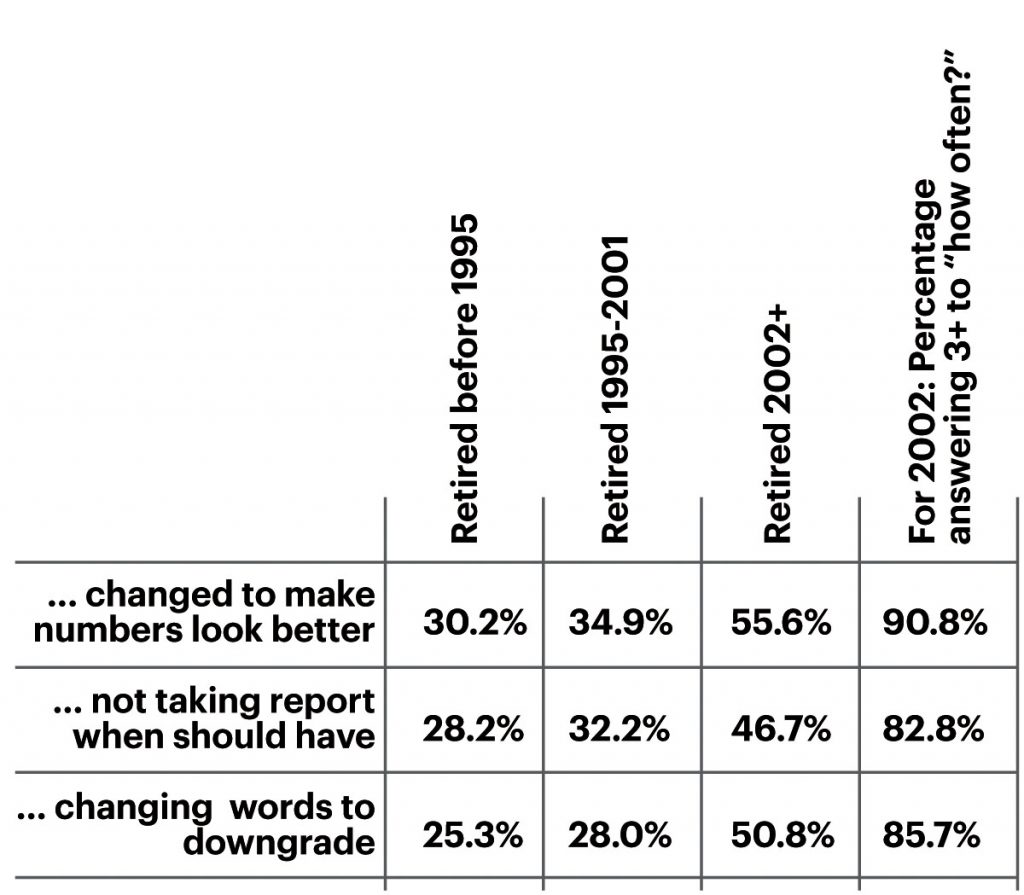What is the distinction between sensors and sentinels? Both have the capacity to sense danger, but while the sensor translates potential threats into numbers, the sentinel sends out early warning signals. For Gabriel Tarde, professor of sociology in the College de France at the turn of the XIXth century, societies indeed had sense organs: their statistical bureaus (Didier 2010). He argued that sensations were all quantitative, even when belonging to an individual person, and that this statistical character was only more visible when related to entire societies because the senses of these collectives were still retarded compared to an individual human organism. When statistics and societies develop, according to Tarde, the gap will disappear, and there will be no more difference between an individual ear and juridical statistics:
“A statistical bureau might be compared to an eye or ear. […] Let us hope that the day will come when the representative or legislator who is called upon to reform the judiciary or the penal code and yet who is, hypothetically, ignorant of juridical statistics, will be as rare and inconceivable a being as a blind omnibus driver or a deaf orchestral leader would be to-day. I might freely say, then, that each of our senses gives us, in its own way and from its special point of view, the statistics of the external world.” (Tarde 1903, 135)
For Tarde, one of the very first things that societies have sensed statistically was crime and insecurity, the major social danger of his time. Contemporary societies produce more and more crime statistics, up to the point that they sometimes seem to appear in the world on their own. The visionary Tarde wrote “a time may come when upon the accomplishment of every social event a figure will at once issue forth automatically, so to speak, to take its place on the statistical registers” (idem, 167). Tarde’s prophecy of a society equipped with sensors may soon be realized.
But the automaticity of the registration of crime statistics initially envisioned by Tarde appears nowadays to be an illusion. Most of these statistics are produced by the police who, right after any action they have taken, account statistically for it. In this case, the sensor is thus not the statistical bureau alone, but the beat policeman who wanders in the street, demonstrates his presence, and intervenes when necessary – all of which is supposed to produce figures. The problem is that, as every cop and every criminologist knows, it is frightening to fight against crime. The risk of being hit, shot, etc. is high, and the risk of being sanctioned by the brass if misbehavior is reported is even higher.
Thus, policemen are caught between two fires: the social danger they are supposed to fight, sense and report to the bureau and from there to the entire society, and the personal danger they perceive. These two types of sensing produce tensions and contradictions in the behavior of the sensor. To escape personal danger, cops often have the tendency to do as little as possible, and even to ignore actual crime when possible.
This is why management puts pressure on them. The last tool that it designed to this end employs statistics itself, and this new system has produced strange effects. In the 1990s, William Bratton, then the Police Commissioner of the NYPD, drew from management books, especially Hammer and Champy (1993) and Osborne and Gaeblers (1992) (who were themselves influenced by Wilson (1989), the author of the famous broken-windows theory) ideas that led to the creation of compstat, a new policing organization that won the Innovations in American Government Award from the Ford Foundation and the John F. Kennedy School of Government at Harvard University. In the new protocols implemented under compstat, the precinct commanders gather their data and must explain, in front of their own chief, how they responded to the reported crimes in their precinct. They are asked to analyze and use for themselves, as managers, the data that they have collected. In management term, commanders are made accountable for the decrease of crime in their precinct, and must be able to show that they have taken initiatives. All of this must be done through statistics collected and analyzed according to compstat standards. If not, their careers are at risk.
“Reward and punishment were based on performance and both were distributed swiftly: while more than 75% of the precinct commanders were replaced within 18 months, the participants also witnessed promotions at an unprecedented rate” (O’Connell 119) wrote one of Bratton’s assistants.
The pressure put on cops in order to improve their ability to fight crime appeared to work as crime sunk dramatically in those days in NYC. When seeing government statistics from the period, observers even spoke about a “miracle”.

New York City Subway felonies (yellow) and robberies (red). A chart published in Kelling and Coles (1996, 52) to assess the positive effect of Compstat on New York City crime.
The success was so noticeable that a great number of polices in other parts of the US and around the whole world imitated NYPD’s compstat model. Baltimore implemented a similar system under the name of Citystat (which is seen in the TV series The Wire) and France imported the technique in 2000 in the hope that crime would go down as much as it had in NYC. As time went by, the constant accountability and initiative that compstat requires from police officers, commanders and under, caused unpredictable effects on the careers of those implementing this model and on their work. These were not exactly the same in France and in the US.
First, new pressures created by the technique induced officers to game the numbers. It is sometimes easier to cheat the report than to actually do something against crime. One classic way to do this is to downgrade complaints. For example, someone comes in the police headquarter and reports a rape. The problem might be that the police do not want the rape rate associated with their station to rise, so they record the reported incident as a sexual assault, which is not a crime but a felony. As a result, this particular event does not enter the crime category and resources attributed to investigating and solving the crime are diminished. The police have better results, but crime paradoxically becomes easier to commit without detection. A distortion in reality appears.
In France, a controversy about the truthfulness of the crime statistical reports has steadily grown since the 1990s between the police on the one hand and social scientists and activists on the other (Didier 2011). In the US, the first whistle-blower alerting the public to the rampant problem of underreporting was Adrian Schoolcraft, an officer in the NYPD. He recorded secretly all his interactions with his chiefs during several months, and released the tapes in May 2010 to the Village Voice. These tapes showed many instances of police misconduct and manipulation of the crime report data. He is now in the process of suing the NYPD for intimidation.
Schoolcraft’s claims were bolstered by further research, when Eterno and Silverman (2010), a former cop and a sociologist, designed a survey in which retired officers were given the chance to anonymously declare any “unethical behavior” they might have engaged in because of the pressure created by the compstat statistical requirements. Their report showed that more than 50% of the officers who retired after 2002 declare having changed their reports to make figures look better.
These sociologists and their survey can be called sentinels, because they reveal an unpredicted danger: pressure put on police officers disturbs the reports that they make. This effect, called the “Goodhart law”, states: “any observed statistical regularity will tend to collapse once pressure is placed upon it for control purposes” (Chrystal et al. 2001). Sentinels come into play when sensors are disturbed and biased by pressure.
But pressure might not only lead to cheating. It can also cause people to fall into a depression. When individuals have to make constant choices under the constraint of being efficient, they sometimes have a nervous breakdown (Ehrenberg 2000). The suicide of a young female officer in France in 2011 who left a letter where she explicitly accused the pressure of the statistics as one of the burdens she could not cope with is a disastrous example of the side effects of statistical pressure.
Thus, after importing compstat from the US, French management made adaptations to it because of their awareness of psychological dangers. The French version enlarged the “Psychological Support Operational Unit“ (psou) that had been created a few years before. Michel Gaudin, who at the time was deputy director of national police, put Eliane Theillaumas in charge of overseeing the implementation of the newly expanded French psou.
Initially a teacher, she pursued an MA in psychology while working full-time. She was then hired as a recruiting agent for the police, but thought it would be interesting to use her skills to care for cops’ psychological wounds. After hearing that there were psychology classes devoted especially to the subject of caring for the police, Theillaumas visited the United States to obtain a victimology diploma at Washington University in 1990.
In 1996, when she was back in France, a series of suicides among the police were widely reported by the press. It was during this public relations crisis that Michel Gaudin asked her to organize the unit. Though she was the initially the sole employee of psou, today there are 60 psychologists working under her. The number of requests for help has risen dramatically. The unit proposes different kinds of action, which, according to madame Theillaums, are inspired by psychological research in Montreal, Canada. First there are “post-trauma actions”, dedicated to those who went through a traumatic event (e.g. a mass murder, a physical wound, the suicide of a colleague). They comprise several types of reunions such as “diffusing”, or “debriefings” (single-session, semi structured crisis interventions designed to reduce or prevent psychological reactions and responses to the traumatic event). Based on these debriefings, the psou tries to focus on monitoring the solidarity between the officers, and teaches them how to remain alert to the signs of colleagues expressing a tendency to suicide. In other words, sensors for crime are asked to play the role of sentinels for themselves.
We try to put into play solidarity in the sense that it exists among Anglo-Saxons, that is to say that the police must remain attentive to each other, we’re not asking them to take the place of psychologists, but instead to be alert to when there may be a change in behavior of a colleague after a serious personal or professional event. There are also verbally expressed messages that could help to alert others to such problems, such as, “I’m going to freak out”, “If it continues like this I will jump”, these are never innocuous remarks. (Theillaumas, interview 07/20/2011)
Since traumatic events are rare, the psou also organizes simple “conversations”, which are scheduled after a phone call from a person who wants to talk about other problems that are not related to traumatic events. During these conversations, psychologists collect the complaints from the officers and help them to manage everyday stresses associated with police work. Most of the time, complaints intertwine issues spanning work and family life. Pressure to reach the objectives of the French version of compstat are seen to come into contradiction with attempts to raise kids and spend time with spouses. The primary service psou staff provides in these cases is to listen to the pain, and sometimes, if the officer accepts help, psou may attempt to mediate disputes, either within the police organization or with the family.
Recently, Eliane Theillaumas wanted to prove the importance of psychological services to reluctant policemen who might not want to admit that they might be weak or, even worse, might need outside help to deal with stress related to their professions. To this end, she decided to produce statistics about the activity of her own unit. In our terms, she would not content herself of being a sentinel: she wanted to become a sensor.

Activity of the Psychological Support Operational Unit. The data was given to the article author during the interview.
Police statistics are sensors for social dangers such as crime and insecurity. But when the implementing organization puts pressure on them to have them capture more crime and more insecurity, sensors finds themselves in danger of gaming the numbers or falling into a psychological depression. This is why, in a reflexive turn, sentinels, such as Eterno and Silverman’s sociological survey or madame Theillaumas’ charts, appear to sense the dangers to which sensors are submitted. Danger is not something passive that expects to be taken into account by social forms; it apparently participates actively to the activity of the sensor. Can Tarde’s prophecy of a society totally equipped with sensors integrate this reflexive dimension of the sentinels?


